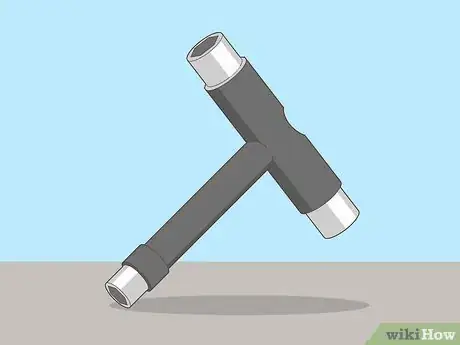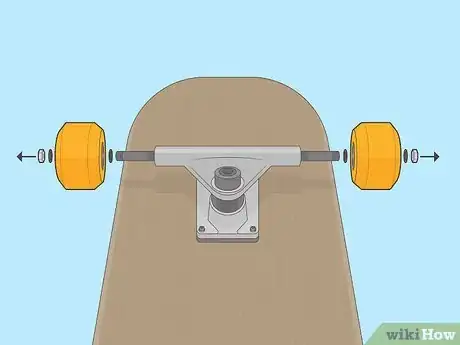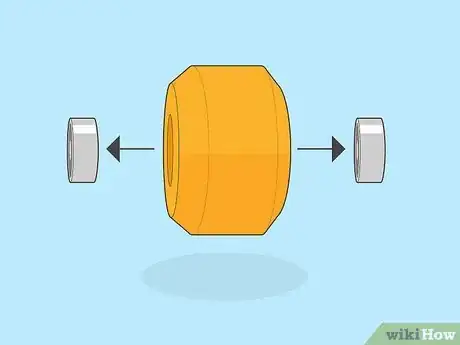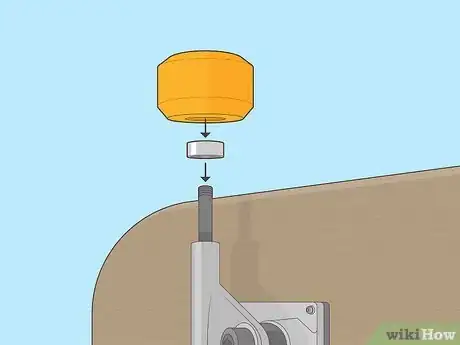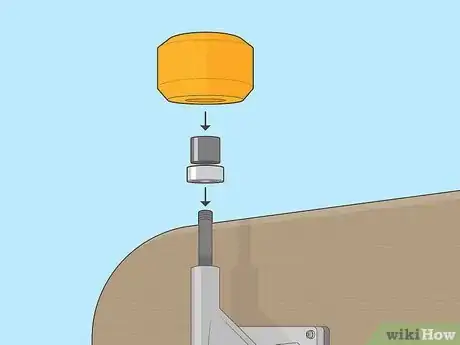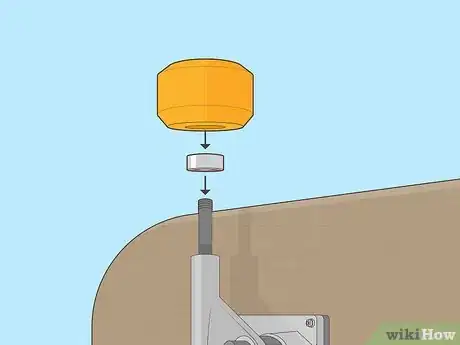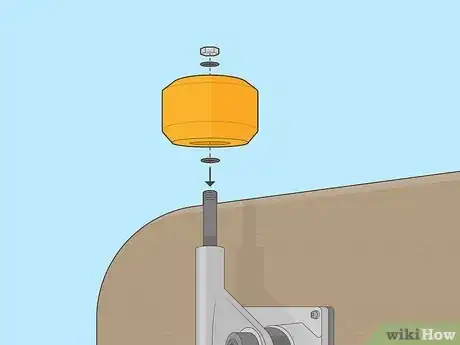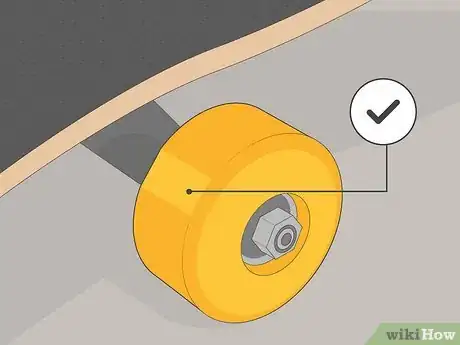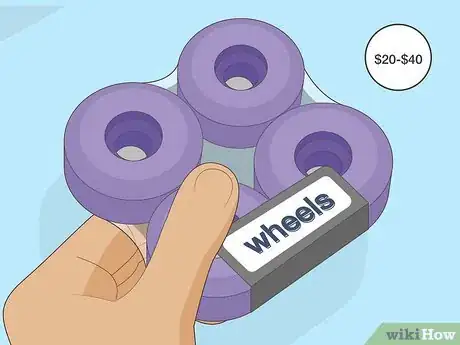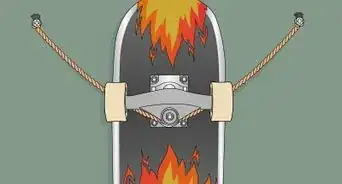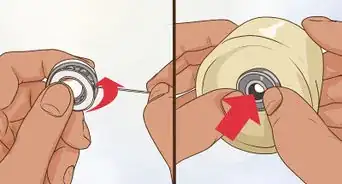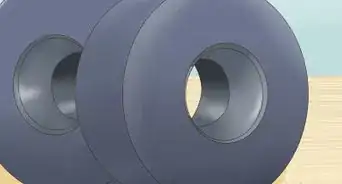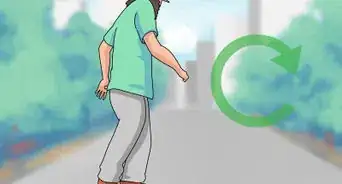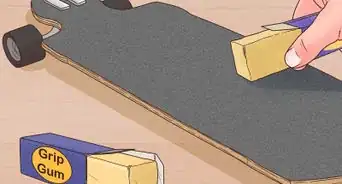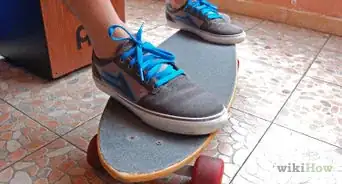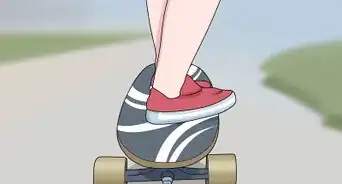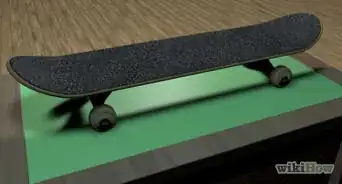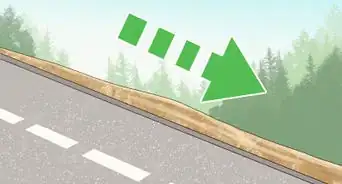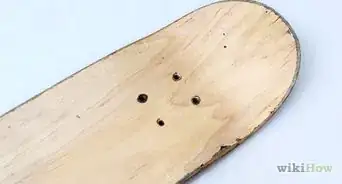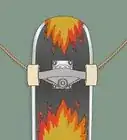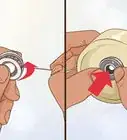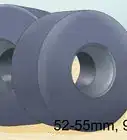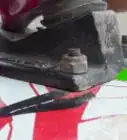This article was co-authored by Jon Depoian and by wikiHow staff writer, Janice Tieperman. Jon Depoian is a Skateboarding Instructor and the Owner of Intro2Skateboarding, an organization based in Orange County, California that provides professional private, home-school, after-school, birthday party, and summer camp skateboard lessons for beginners and experienced skateboarders alike. Jon has over 21 years of skateboarding experience and over 10 years of skateboard instruction experience. He also has extensive experience producing street skateboarding videos and skating competitions.
There are 18 references cited in this article, which can be found at the bottom of the page.
This article has been viewed 14,900 times.
Does your skateboard ride feel bumpy and uncomfortable? Don’t worry. Changing your wheels is a simple process, as long as you have the right tools and supplies at home. We’ve tackled all your frequently asked questions, so you can get back on your board as soon as possible!
Steps
How do you remove old skateboard wheels?
-
1Remove the axle nuts and speed washers from each wheel. The axle nuts are the thick, hexagonal, metal pieces holding the center of each wheel in place on your skateboard. The speed washer is the thin piece of metal directly below the nut. Unscrew these nuts and washers with a skate tool or wrench, and set them aside for later.[2] [3]
- Each wheel will have 2 speed washers and 1 axle nut. One speed washer will be directly on the axle, while the other will be under the axle nut.[4]
-
2Pull the bearing out of the wheel. The bearing is a small metal cylinder that fits in the center of your wheel, and helps keep your wheel attached to the main axle. Slide the wheel off and hold it at a 45-degree angle along the end of the axle. Then, grip the wheel and pull it in an upward motion, which should separate it from the bearing.[5]
- There are 2 bearings in each wheel. When completely replacing your skateboard wheels, there will be 8 bearings in total.
- If your bearings look a bit worse for wear, clean them before installing the new wheels.
How do you install new skateboard wheels?
-
1Press the first bearing into the new wheel. Prop your skateboard sideways, so the axles are pointing directly upward. Then, slide a bearing on the axle with the “open” side facing up. Center your new wheel on top, pressing it onto the bearing with your thumbs.[6]
- Skateboard bearings have a “closed” and an “open” side. When you replace your wheels, reinstall the bearings with the open side facing the outside of the wheel.[7]
-
2Install the spacer on top of the second bearing. Once you’ve pressed the first bearing into place, slide your second bearing onto the skateboard axle. Then, slip the spacer on top of this second bearing. Press and install the bearing into place as you normally would.[8]
- A spacer looks like a thin, cylindrical piece of metal.
- If you don’t have a spacer, you can skip this step.
-
3Fit the second bearing into your new wheel. Slide another bearing onto 1 of the skateboard axles, with the “open” side facing down. Then, flip your wheel over, centering it on top of the second bearing. Carefully press down on the wheel until the bearing is forced into the wheel’s center. Repeat this process with your other wheels and bearings, and set them all aside.[9]
-
4Reinstall the wheels with the speed washers and axle nuts. Slip a speed washer directly on the axle. Then, slide your new wheel on top. Sandwich the wheel between another speed washer, along with an axle nut. Tighten this nut in place with your wrench or skate tool to hold the new wheel in place. Repeat this process with your other 3 wheels, and you’ll be ready to skate again![10]
- You don’t need to tighten the axle nut all the way. Instead, leave a little wiggle room so your skateboard wheel can still spin.[11]
References
- ↑ https://m.youtube.com/watch?v=l_F3eqG3qZ0&t=2m0s
- ↑ Jon Depoian. Skateboarding Instructor. Expert Interview. 5 June 2020.
- ↑ https://m.youtube.com/watch?v=l_F3eqG3qZ0&t=2m7s
- ↑ https://m.youtube.com/watch?v=_FM3Zmrye7w&t=0m13s
- ↑ https://m.youtube.com/watch?v=l_F3eqG3qZ0&t=2m16s
- ↑ https://m.youtube.com/watch?v=_FM3Zmrye7w&t=0m20s
- ↑ https://m.youtube.com/watch?v=bUY8lfuiy6Y&t=0m41s
- ↑ https://m.youtube.com/watch?v=bUY8lfuiy6Y&t=0m51s
- ↑ https://m.youtube.com/watch?v=_FM3Zmrye7w&t=0m25s
- ↑ https://m.youtube.com/watch?v=_FM3Zmrye7w&t=0m37s
- ↑ https://m.youtube.com/watch?v=l_F3eqG3qZ0&t=3m26s
- ↑ https://www.skateboardershq.com/when-should-you-replace-your-skateboard-wheels/
- ↑ https://m.youtube.com/watch?v=l_F3eqG3qZ0&t=1m26s
- ↑ https://www.masterclass.com/articles/guide-to-skateboarding-powerslides#quiz-0
- ↑ https://www.skateboardershq.com/how-much-does-a-skateboard-cost/
- ↑ https://www.skateboardershq.com/when-to-replace-skateboard-bearings/
- ↑ https://m.youtube.com/watch?v=l_F3eqG3qZ0&t=1m40s
- ↑ https://m.youtube.com/watch?v=D_mZV3Covfw&t=0m30s
